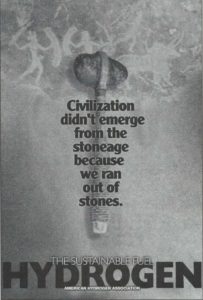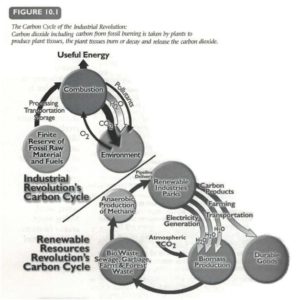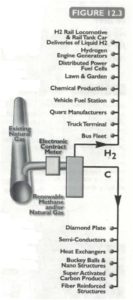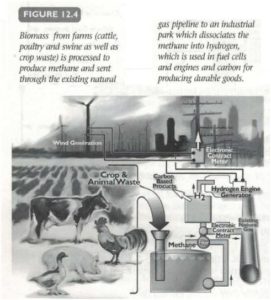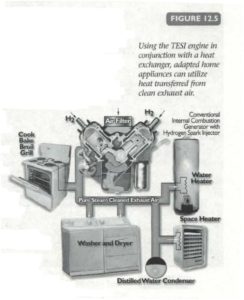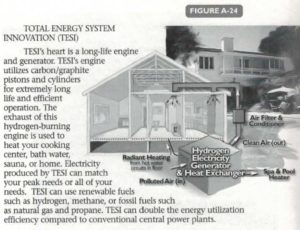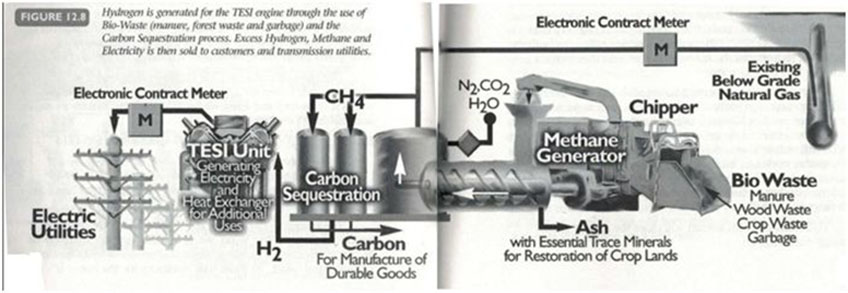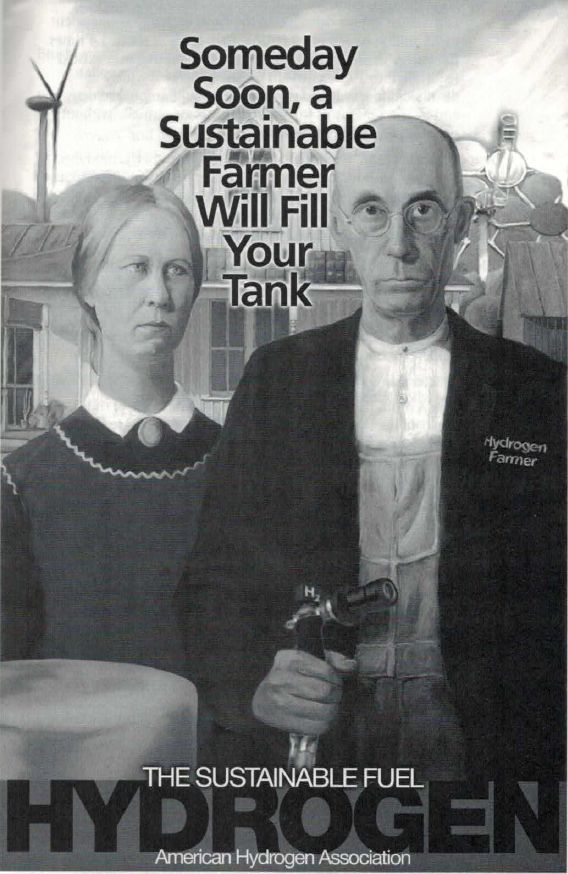The Solar Hydrogen Civilization
The Solar Hydrogen Civilization
By: Roy McAlister
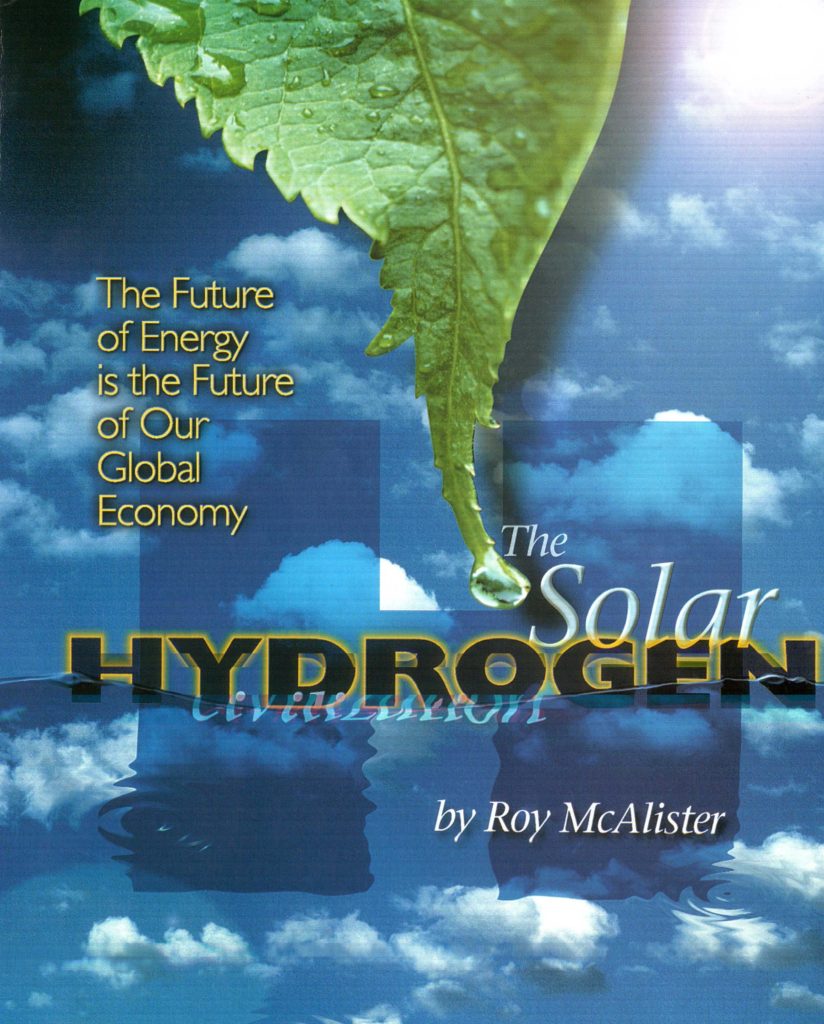
In 2005, Roy McAlister published The Solar Hydrogen Civilization: The Future of Energy is the Future of Our Global Economy. Roy’s book offers a constructive and uplifting social, environmental, and inspirational vision of sustainable economic development that is technologically achievable now. He has demonstrated new capacity for production and distribution of low-cost hydrogen and for carbon as a 21st century manufacturing material that can be stronger than steel, lighter than aluminum, and more conductive than copper – to usher in the peaceful, healthful and sustainably profitable Renewable Resources Revolution.
Book Preview / Navigation
- An invitation to job creation and entrepreneurship
- Energy Independence
- The Plan for Renewable Resources: “Prosperity Without Pollution”
- Waste-to-Energy Conversion
- New Manufacturing Paradigm / Ecological Resource Understanding of Hydrogen and Carbon
- Pipeline Transport Infrastructure
- Saving Civilization: The Hydrogen and Durable Goods Perspective
- More than two billion jobs for the global economy
- Saving Civilization: A New Carbon Cycle with Renewable Resources
- Production of hydrogen and carbon products
- Biomass / Biowaste Energy Harvesting
- TESI engines and home appliances
- Home energy efficiency: combined heat and power (CHP)
- TESI engines and Biomass/Biowaste processing
- Saving Civilization: Farmer produced fuel
An invitation to job creation and entrepreneurship as we build new energy independence through a 21st Century vision of agriculture and manufacturing
“Graduates from the world’s leading universities, colleges, and trade schools along with qualified veterans who earn honorable discharges from military service are solicited to join the best, brightest, and most determined farmers and entrepreneurs to form 6,500 new ventures and attract investment for providing key technologies and services to facilitate sustainable economic development in communities of approximately one million person.”
“The Grand Plan, unifying purpose and destiny of humans on Earth is to provide as much hard work, inspiration and dedication as it takes to achieve sustainable prosperity in every community by harnessing solar, wind, wave, falling water and biomass resources to overcome Civilization’s futile dependence upon burning over one million years’ of fossil accumulations each year.” (page 1)
“Nearly every nation has adequate solar, wind, wave, falling water, and or biomass waste resources to achieve sustainable energy independence. Even the world’s largest energy importer (the USA) has adequate renewable resources to replace fossil energy sources.” (page 16)
The Plan for Renewable Resources: “Prosperity Without Pollution”
“Our current economy drains natural resources and pollutes the environment. It can be restructured to provide prosperity without pollution by replacing fossil fuels with energy from renewable sources. Hydrogen runs the stars, provides energy from the tiniest to the largest forms of life on Earth…” (page 18)
“Collection of landfill methane prevents its escape as a greenhouse gas. This is a less than zero emissions result for the combination of fuel source and vehicle use… A much greater emissions result is accomplished when that methane is dissociated into carbon and hydrogen and gasoline is replaced by hydrogen.” (page 38)
New Manufacturing Paradigm / Ecological Resource Understanding of Hydrogen and Carbon
“…it is twenty to seventy times better to use methane as a fuel to produce carbon dioxide than allowing the methane to escape from wastes. It is thousands of times better to convert methane to hydrogen and carbon enhanced durable goods and to replace gasoline with such hydrogen.” (page 38)
Pipeline Transport Infrastructure
“…modern steel pipelines now carrying natural gas can readily transport mixtures of renewable hydrogen and methane along with natural gas. This facilitates an important opportunity to link producers of hydrogen from solar-rich, wind-rich, falling-water and wave-rich areas with markets in far- away cities that are presently served by natural gas.” (page 30)
Saving Civilization: The Hydrogen and Durable Goods Perspective
“Removing hydrogen for use as an ultimately clean and lighter energy carrier and using the remaining carbon to produce durable goods makes much more economical use of remaining fossil reserves. Carbon recovered from hydrocarbons can be made into countless durable goods such as wind and wave machines, golf clubs, fuel-efficient cars and the fastest and most durable aircraft. Hydrogen recovered from hydrocarbons can be used as the ‘minus-emissions’ fuel in engines that clean the air.”
“Thus we will utilize the best technologies and practices of the Industrial Revolution to efficiently mass produce the carbon materials needed to reinforce solar collectors, wind turbines, wave machines, essential tools, building products, farm equipment and transportation systems needed by every community to achieve sustainable prosperity.” (page 58)
More than two billion jobs for the global economy
“Good job opportunities will be created in self-help districts…each with approximately one million persons…the production density and magnitude typically needed for optimizing collection and transport of organic wastes for efficient sequestration of carbon to produce durable goods and for production of hydrogen for transportation, electricity generation, and process chemistry applications. Self-help districts will achieve sustainable economies by converting sequestered carbon into components, equipment and systems that harness locally available solar, wind, falling water, waves and/or geothermal resources into hydrogen and electricity.” (page 140)
Saving Civilization: A New Carbon Cycle with Renewable Resources
Click on Figure to enlarge
Figure 10.1
“The Carbon Cycle of the Industrial Revolution: Carbon dioxide including carbon from fossil burning is taken by plants to produce plant tissue, the plant tissues burn or decay and release the carbon dioxide.”
“Figure 10.1 shows the Carbon Cycle of the Industrial Revolution. Humans have changed the amount of carbon that is available for the carbon cycle by adding carbon from fossil deposits that were buried for more than 60 million years. We now burn the fossil equivalent of about 9 billion gallons of oil each day and this has ramped up the carbon dioxide content of the atmosphere. Presently there is about 30% more carbon dioxide in Earth’s atmosphere than at any time in polar snow core records that date back some 160,000 years.”
“Sequestering carbon from biomass to produce durable goods will reverse the build-up of carbon dioxide in the atmosphere. At Renewable Industries Parks, methane from renewable sources will not be distinguishable from methane from fossil sources. But the practice of separating hydrogen and carbon to produce durable goods will play an increasingly important role in saving Civilization from the embarrassment of wasting the old and newly photosynthesized carbon and suffering the atmospheric changes that harm us. (page 148)
Production of hydrogen and carbon products
Click on Figure to enlarge
Figure 12.3 (page 191)
Renewable Methane and/or Petroleum Natural Gas (CH4) can be moved from one location to another through existing natural gas pipelines – the interstate distribution grid from producers to homes, businesses and industry. Pipeline deliveries to industrial parks enable inexpensive methane to be separated (“cracked”) into Hydrogen for fuel and Carbon for manufacturing durable goods.
Hydrogen fuel produces no carbon emissions from busses, trucks, manufacturing, vehicles, fuel stations, farm, lawn and garden equipment, distributed power fuel cells, hydrogen engine generators, and hydrogen rail locomotives.
Carbon manufacturing of durable goods includes a virtually unlimited array of new products with higher strength, longer life, and weight reduction – such as fiber reinforced transportation equipment, structures, super activated carbon products, Buckey balls, nano sensors and electronics, heat exchangers, semi-conductors, and diamond plating.
A new golden age of manufacturing can be envisioned as 3-D printing break-through (additive manufacturing) to use carbon graphene and fiber to manufacture cost-effective products with higher strength and durability at virtually any location on the planet.
Biomass / Biowaste Energy Harvesting
Click on Figure to enlarge
“Biomass from farms (cattle, poultry and swine as well as crop waste) is processed to produce methane and sent through the existing natural gas pipeline to an industrial park which dissociates the methane into hydrogen, which is used in fuel cells and engines, and carbon for producing durable goods.” (page 192)
TESI engines and home appliances
Click on Figure to enlarge
Figure 12.5
“Using the TESI engine in conjunction with a heat exchanger, adapted home appliances can utilize heat transferred from clean exhaust air.” (page 193)
Home energy efficiency: combined heat and power (CHP)
Click on Figure to enlarge
Figure A-14
“TESI’s heart is a long-life engine and generator. TESI’s engine utilizes carbon/graphite pistons and cylinders for extremely long life and efficient operation. The exhaust of this hydrogen-burning engine is used to heat your cooking center, bath water, sauna, or home. Electricity produced by TESI can match your peak needs or all of your needs. TESI can use renewable fuels such as hydrogen, methane, or fossil fuels such as natural gas and propane. TESI can double the energy utilization efficiency compared to conventional central power plants. (page 228)
TESI engines and Biomass / Biowaste processing
Click on Figure to enlarge
Figure 12.8
“Hydrogen is generated for the TESI engine through the use of Bio-Waste (manure, forest waste, and garbage) and the Carbon Sequestration process. Excess Hydrogen, Methane and Electricity are then sold to customers and transmission utilities.” (page 194)
Saving Civilization: Farmer Produced Fuel
Click on Figure to enlarge
“Think of it, you will be using cheaper fuel that is increasingly produced by farmers and city managers who send renewable methane into the natural gas lines to make ultimately clean hydrogen to power your car on the roads and highways. Emissions tests show that car engines converted to SparkInjector operation with hydrogen can actually clean the air and produce exhaust gases (air and dihydrogen monoxide – also known as steam) that are cleaner than the air that enters the engine. Existing engines can last longer, produce more power, and steam clean the air…and produce income for you as they provide market pull to help America achieve sustainable energy independence.”
“You will be doing more for Civilization than all the marching armies since King Ramses II and more good than all the economists of the Industrial Revolution who advocated the economy of fossil depletion as a desirable pursuit.”
“CONCLUSION: Until the stars no longer support human endeavors, inventions will provide endless progress by the Solar Hydrogen Civilization.” (p 198)
Partner Resources
Helpful Links

